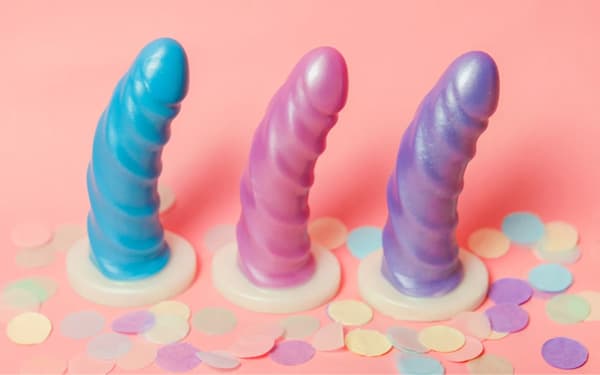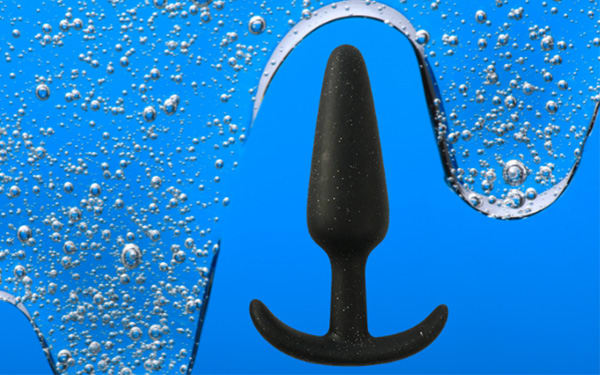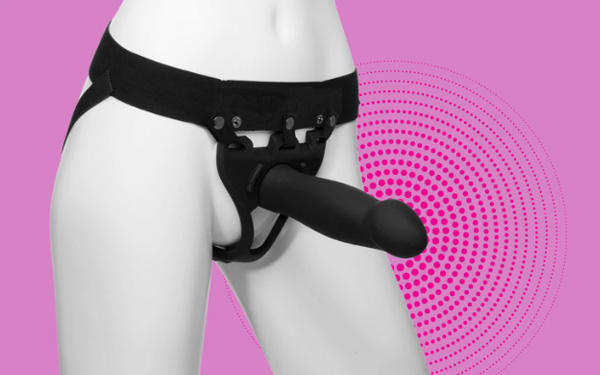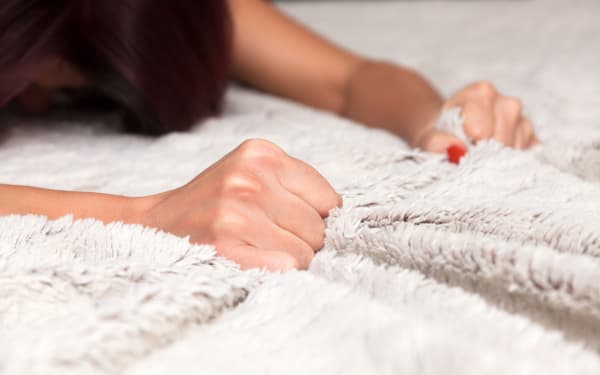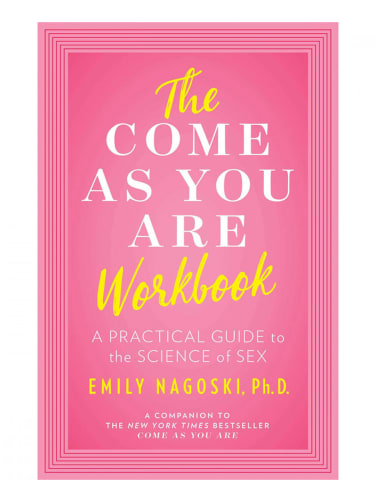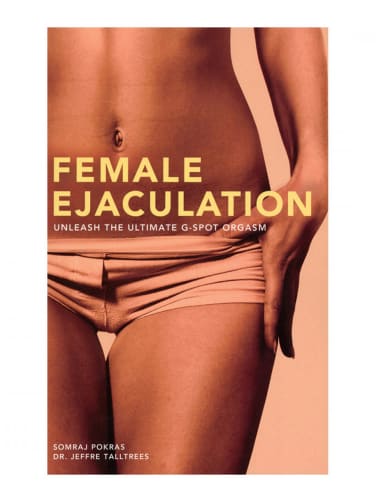Types of Orgasms and How to Explore Them
There’s more than one way to have an orgasm! Though all orgasms are the same in one respect—responses in our brains make them possible—many people categorize them by the body parts that are stimulated to cause them. , and many people find that different sources of orgasm make the resulting peak feel different from others.
So let’s look at how to have an orgasm: the varying ways (and points of pleasure) that can get us to climax! We’ll look at male orgasm, female orgasm, and orgasms for everybody else too—though we won’t lean heavily on these categories, because everyone is a little different when it comes to orgasm—and everyone mostly also has many similarities.
What is an Orgasm?
First, let’s define an orgasm. Often called a “climax,” which is actually quite a clear way of describing it, an orgasm happens when arousal builds to a high point of pleasure and (usually) sexual sensation.
 What does an orgasm feel like?
What does an orgasm feel like?
Orgasms can be very strong or pretty mild; in part this has to do with how long stimulation goes on, and how aroused a person is in the first place. Without arousal, orgasm is unlikely. And because the path to orgasm isn’t always the same for everyone (and our body and brain chemistry won’t be exactly the same either), it’s hard to describe orgasmic sensation that will be true for any person who has an orgasm. But there are some common elements:
- Building arousal and/or pleasure culminating at a peak (or climax!)
- A “sex flush” often happens—like a blush and/or sensation of warmth on the face and chest.
We often feel the build-up, and orgasm itself, in our muscles. You might curl or stretch out your toes, clutch the sheets, and when orgasm happens, maybe even arch your whole body. - Part of the muscle involvement that is very much associated with orgasm is the pulsing of the pelvic floor (aka Kegels or PC muscles)—this pulsing can feel very good, and if the muscles are in good tone, this is a really notable part of an orgasm.
- After all that sexual tension, arousal, and muscular release, post-orgasm can feel super-relaxing! Post-orgasm (aka afterglow), people might feel cuddly or cozy; drowsy; or all wrung out in a good way! It can minimize pain, help you sleep, or in some cases jazz you up so you want to do it again, or get up and get active.
There are many possible ways to experience orgasm but the most important way is how you prefer to experience it. That said, maybe there are ways you haven’t even tried yet… so read on.
Types of Orgasms (and how to reach them!)
This section uses the term types to mean “What body part is the primary source of this particular orgasm?” It can be possible to experience an orgasm without directly stimulating an erotic organ or zone, but for most people, those hot spots are how orgasm can be reached.
Also, as a note: this section is going to cover orgasm, not ejaculation - we’ll get to that later!
 Clitoral Orgasm
Clitoral Orgasm
The clitoris (or clit for short) is the most sexually sensitive part of most bodies that possess one. It’s part of the vulva, located where the upper part of the labia meet and above the urethral and vaginal openings. It is (usually) a fairly small organ, at least from the outside—inside the body it is much larger, with legs that surround each side of the vagina like a wishbone. But think “small but mighty” when you consider the clit, because its surface is packed with thousands of nerve endings.
It is so sensitive that if it is stimulated before a person is aroused enough, or touched without lubrication, it might feel irritating or even painful. And—as with any body part when we’re discussing sexual sensations—any given person might like a range of clitoral contact (including indirect contact, or none at all). So always pay attention to partners’ responses—or better yet, ask what they like the best!
Clit stimulation preferences might include a certain level of pressure, light touch, the feeling of fingers grasping the clit (or a mouth providing wetness and whatever degree of suction the person prefers—don’t start clit play with intense suction unless someone tells you they want it!). Lubed fingertips or a tongue can feel great strumming back and forth across the clit; circling it; flicking lightly, or with more pressure; mashing down on it and adding a bit of motion; and if you want to try writing the alphabet either with fingertips or a tongue, go ahead and experiment! And of course toys made to pleasure the clit, from vibrators to air suction playthings, can be fantastic and orgasmic additions to clit play.
Just keep in mind, a lot of clits have dislikes as well as likes. Clits tend not to respond well to being contacted directly (especially with pressure) before the person is aroused—the clit is not a doorbell or an “on” switch! Also, if the clit is being stimulated in a certain pattern, beginning a higher arousal path towards orgasm, don’t disrupt the tempo or other element of the successful stimulation abruptly - this can interrupt a clit on a mission to orgasm or lose the O altogether!
As always when we discuss sex techniques, your (or a partner’s) mileage may vary because we are not all the same. Some may like it strong, some soft. Listen to your own body or what a partner tells you about theirs.
 Vaginal / G-Spot Orgasm
Vaginal / G-Spot Orgasm
It is a very common myth that the primary sex organ of a person assigned female at birth is the vagina. The very definition of “sex” is often thought to be penis + vagina - though sex is a far wider phenomenon than this. While the vagina IS the primary organ (or at least the initial one) for reproductive sex, reproduction and sexual pleasure can occur separately, and we’re talking orgasm here! So learning more about not just about vaginal sex but vaginal pleasure is an important corrective to the mistaken idea that sexual arousal is initiated by, or requires, an inserted penis.
If it’s important for arousal to be present for clitoral stimulation to feel good, it is super-important for vaginal stimulation. The vagina’s function during sexual arousal is to lubricate (though in some situations it doesn’t and that’s OK —get some lube to add!) and engorge: its tissues swell so it can comfortably accept whatever the vagina’s owner might wish to insert. Fingers, toys, a penis can all feel great entering an aroused and lubricated vagina— but take your time to get there if you need. Discomfort or pain during penetration can be caused by many different circumstances—but lack of sufficient arousal and lubrication is high on the list.
Most of the vagina’s nerve endings are in the first third of the vaginal course—from the opening, which is part of the vulva, to a little ways inside. Deeper in, the vagina’s neurology responds particularly to pressure, motion, and fullness.
Things that might be important to vaginal response and orgasm during vaginal penetration are:
- Arousal and how turned on the person is.
- Size preference (bigger isn’t better unless it is to the person in question), including girth
- Shape (of penis, toy, etc.)—this is a G-spot preference in particular, we’ll explore that below!
- Thrusting speed, depth, and rhythm; how hard (or not) the thrusts are
- The length of time can be important, but “going all night” won’t help with vaginal orgasm unless the person with the vagina likes long-duration intercourse and is aroused and lubricated enough for it to feel good.
The G-spot is located partway down the vagina, internally. Its more scientific name is the “prostate femina” (we know, you might not identify as “femina,” sorry). It is comparable to the prostate; it’s a gland that wraps around the urethra, and pressure and motion through the front vaginal wall can stimulate it, sometimes to orgasm (and sometimes ejaculation/squirting, too). You can deep dive on the G-spot here.
The G-spot often likes fairly strong pressure, making arousal (and lubrication/engorgement) even more important so that it remains comfortable. To find it, use curved fingers (toward the front of the body—you might or might not be able to reach your own, it depends on your flexibility) or a curved toy like a G-spot vibe or G-spot dildo. The curved shape adds to the pressure you can put on the spot. In addition to the pressure, stroking might be extra-pleasurable.
Like the clit, the G-spot is NOT a doorbell and isn’t something to press on first to turn a person on. High arousal is what makes this stimulation feel great.
 Penis Orgasm
Penis Orgasm
Penis play, intercourse, or other penile stimulation isn’t the only route to orgasm for a person assigned male at birth, but it’s no surprise it is such a focal organ for arousal and orgasm. Its head can be extremely sensitive, especially for those who still have a foreskin. In fact the head (or tip) of the penis basically functions just like the clit, and orgasm-seeking that doesn’t include enough focus there can sometimes prove disappointing.
There are hot spots on the penis - like the super-sensitive tip and the frenulum (a nerve dense spot on the underside of the penis, where the head meets the shaft) - that you can focus on, or you can play with the entire shaft. Some people may even enjoy having their balls played with as a way to help with arousal or as the main event!
Rhythmic stroking is probably the most common way to achieve a penile orgasm solo—you can add toys like strokers or extra vibration with this activity - check out our picks here. Some like to stroke against something else, like doing so over clothing or against something like a pillow or sheets. This adds more body movement and might promote extra arousal. Common partnered activities that often result in orgasm include handjobs, fellatio (aka blowjobs), and intercourse (vaginal or anal).
 Anal / Prostate Orgasm
Anal / Prostate Orgasm
Speaking of anal—it is possible to orgasm from anal intercourse or play alone, although other nearby erotic areas might be stimulated too. It is a myth that only those with prostates enjoy or can orgasm from anal sex. The external anus and initial part of the anal sphincter are packed with nerve endings, so anal touch, oral stimulation, and entry (always with lube!) can feel fantastic.
For those with a prostate: This organ functions like the G-spot and tends to especially like pressure and/or stroking. You can only get direct contact with it via anal penetration; like the G-spot, it is found at the front of the body (in this case the front wall of the rectum), below the bladder and wrapped around the urethra. A curved anal-safe toy or a butt plug with a bit of girth can be great additions to solo or partnered anal play.
The prostate does not need vibration, but often likes it.
For those without a prostate (or when penetration is so shallow the prostate isn’t contacted), just follow the sensation. Anal orgasm can be helped along by G-spot stimulation through the rectal wall (depending on the position); the nerves of the anus and anal sphincter; and the internal legs of the clitoris (the penis has these too). All of these erogenous areas, so close to the rectum, can help build pleasure and may result in orgasm.
Also, external and internal anal play are both great additions to a blended orgasm; read on for more about these “twice the pleasure” climaxes.
 Blended Orgasm
Blended Orgasm
A “blended” orgasm is what results when you combine stimulation on more than one erotically responsive area. Each part contributes to the neurology of the orgasm (remember, it happens in the brain, so nerves carry messages from the body part being stimulated, and more nerve involvement means the brain receives a stronger message).
If you are having a hard time responding with an orgasm (or want a stronger or faster one) when you are being stimulated in only one place, try adding a different responsive spot too. The classic example is adding clitoral stimulation to vaginal play - like with a rabbit-style vibrator. But any of the erogenous zones we are talking about here could be stimulated (two or more at once) to create greater arousal and the higher likelihood of a blended orgasm.
Nipplegasms + Other Non-Genital Orgasms
The nipples are commonly an erotic area, though not everyone feels pleasure from nipple stimulation (and many might prefer it done lighter or with more intensity than other people enjoy). Nipple play (like sucking, pinching, using clamps, etc) can result in orgasm if a person enjoys this and is aroused enough.
Other parts of the body can be orgasmic for some people and/or some can orgasm in different ways, including:
- Mouths: Kissing and making out; some people can orgasm from giving oral
- Feet: Foot and toe stimulation, either stroking or sucking (aka “shrimping”)
- Sensitive areas like the ears, neck, throat, and the sides of the face; or tender areas on the inner side of joints like armpits and knee-pits. These are great for sensation play and stimulation via BDSM as well.
- Breath: Tantric sex includes deep, rhythmic breathing and eye contact which can culminate in orgasm
- Muscles: Some people can orgasm just from rhythmic body movements (think pelvic thrusting a la Rocky Horror Picture Show) and/or muscle tension (like climbing a rope—don’t try this at home!)
- Our brains: Some can orgasm through fantasy alone—like a waking version of an orgasmic dream.
 Using Toys to Help Orgasm
Using Toys to Help Orgasm
There are many things that can be used to stimulate and assist when you want to have an orgasm.
Lube
Lube helps to reduce friction, prevent discomfort, and enhance sensation. It can cushion your pleasure parts to allow faster, harder sex—if that’s what you want – or it can amplify light touch. We love lube!
Lube is especially important when you are using toys and/or engaging in vaginal or anal penetration; toys have a different surface than skin, generally bringing more friction, and insertive play is better and safer with lubrication. (You might love it externally too!)
Use a lubricant that works well for you (some people may be sensitive to certain lube ingredients—if it doesn’t feel good, don’t use it). Also consider the material of any toys or safer sex gear you’re using - here’s our handy guide to lube.
Vibrators
The clitoris, penile head, and external anus are loaded with nerve endings that respond well to vibration.
You may prefer a focused, almost pin-point area for your vibration, like with a bullet vibe. Or if you want something less intense and direct, try something that covers much more surface area like a palm vibe or a powered sleeve, since these diffuse the vibrations. Think of the difference in sensation between a pointed finger and the palm of a hand. Now add vibes!
Any erotically responsive body part might like vibration— just make sure your vibe style is safe to use where you want to explore (anal penetration MUST be done with a toy that has a base, for example).
Dildos and Non-Vibrating Toys
Because the vagina and anus have more nerves that respond to pressure, motion and fullness, toys that don’t vibrate can still bring loads of sensation, too! Dildos are intended for penetration (and are anal-safe if they have a base). You can use them for sensations generally comparable to intercourse; you can “train” with them (or other non-vibrating insertables like butt plugs) if you have a new partner whose penis is bigger than you’ve experienced before; you can strap them on and bring penetrative pleasure to someone else. Don’t forget the lube!
 BDSM + Sensation Play
BDSM + Sensation Play
While BDSM isn’t always about seeking orgasmic sensations, they can definitely happen, either because genital play is included (some people like to get kinky with those parts—study up on safety and go for it!) or because often the rhythmic sensations of spanking or flogging set the body on the path to orgasm. Body chemistry can change in BDSM play in similar ways that it does during other kinds of erotic arousal, whether or not the genitals are involved.
BDSM toys that can help with orgasmic build-ups include nipple clamps and suction toys; electro-stim devices; and all kinds of impact play gear: paddles, floggers, canes, and more.
Note, too, that if someone responds to kink, dominance and submission, and so on, all desired kink and sensation play can boost arousal to great heights—an important component of orgasm.
How Do I Know if I’ve Had an Orgasm?
If you felt your arousal climb higher and had the perception that it peaked, you likely had an orgasm. If you felt your pelvic muscles throbbing, squeezing, or contracting, even just one time, that’s more evidence of orgasm. If you feel blissfully worn out afterwards, that’s another clue. Ahhh, afterglow!
If the sensation didn’t peak and tailed off, leaving you disappointed or wanting more, the orgasm might not have happened—though some orgasms are not as earth-shaking as the ones in the erotic stories.
Remember that many people experience a plateau first—a period of time that, while they are highly aroused, the sensation of climbing has stalled—and the orgasm happens after that. So don’t give up too soon! Try to stay aware of the sensations in your body, but not all up in your head.
 Orgasm vs Ejaculation
Orgasm vs Ejaculation
You’ll notice we didn’t include ejaculation in that list of elements that an orgasm might have. This is because they’re not the same phenomenon, though they can definitely occur together—the pelvic floor response we feel with a big orgasm happens is related to the expulsive (if not explosive!) sensation of ejaculation. But orgasm and ejaculation don’t always happen in tandem, and it’s okay if they don’t.
Two types of play that are especially associated with ejaculation are G-spot play (which can lead to squirting) and prostate play. But ejaculation can happen without direct stimulation of those pleasure parts too.
It’s OK Not to Orgasm
Orgasm is a wonderful feeling—but much of sex is full of wonderful feelings, and you can still experience them even if you don’t get to “the big finish”. It’s cliche, yes, but sex totally can be about the journey and not the destination!
You’ll likely have much better sex, and certainly more intimate sex, if you don’t prioritize orgasm over all else. In fact, getting too in our heads about whether or not we’re going to climax could be the thing preventing it, since we’re focusing on our thoughts and not on sensation.
There are also many other reasons why orgasm can be out of reach - external stressors, mental blocks, pelvic or genital pain, fluctuating hormones (like monthly cycles and menopause), side effects from medication (we see this a lot with SSRIs), lifestyle factors (like diet, exercise, drinking, drug use, smoking/vaping), and more. [condensed section on anorgasmia here for length]
Having an orgasm is deeply important to some people and they may feel that sex isn’t complete without it—even that it is the whole point of having sex. Others do not care one bit if they orgasm, or even try to avoid orgasm for a variety of reasons. And some people haven’t orgasmed yet, so the pressure to do so may feel almost theoretical! Whatever your situation, you can learn more about orgasms and explore having them—IF you wish. But it’s not required. It’s okay not to orgasm. It’s your body, sex life, individual feelings and circumstances.
Go experiment and explore!
Whether you are highly orgasmic and looking for more, or just curious or trying to fit sexual decisions into your life in a new way, we hope we’ve given you information to explore and understand yourself a little better. Ultimately, orgasm is about what turns you on, because that is your key to get there.
May your explorations yield new insights and be full of pleasure!

